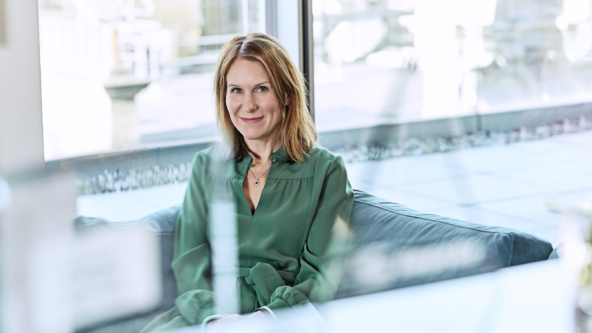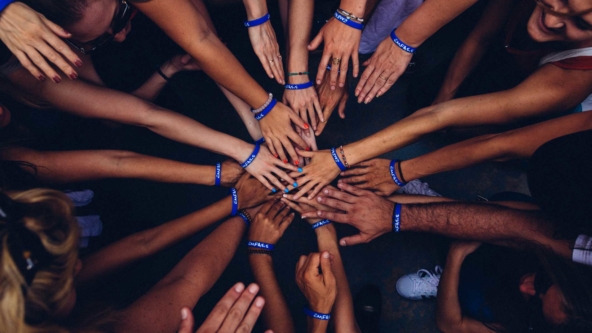As part of the Octopus Springboard initiative, we asked Kuba Wieczorek of Eve Sleep to share some of his unique insights into branding.
Kuba is the co-founder and Chief Brand Officer of award-winning mattress company Eve Sleep and was previously Head of Sports Marketing for Channel 4, responsible for its multi-award-winning Superhuman Paralympics campaign. Kuba has worked in leading advertising agencies for McCann Erickson, Fallon and JWT among others. He’s also an award-winning international photographer. So, when we wanted someone to talk about the philosophy behind branding, he was the number one choice.
1. What is a brand? It’s not a logo or commodity
There are many different definitions of what a brand is. The Dictionary of Brand defines it as “a person’s perception of a product, service, experience or organisation”. The ‘Father of Advertising’ David Ogilvy defined brand as “the intangible sum of a product’s attributes”.
Companies love to talk about their brand, but brand is all about how it will be perceived at the other end. If you want to know what your brand is, talk to the people who experience it. They will give you a more truthful – and useful – answer than you will be able to give yourself.
When people talk to me about creating a brand, I always try to work out whether they are looking to build a brand or just want a new visual identity or logo. It’s a very common mistake to make. But a brand needs to be much more than just a symbol. Brands aren’t born overnight. Over time, the best brands mean more to consumers. It has to have something about it that makes it different. Branding is psychology, so start with the human brain.
It’s also important to understand that a brand isn’t just a product or a commodity. A commodity has to explain itself via the mechanics of price, whereas a brand doesn’t need to explain itself. It could be an aesthetic, could be a colour, could be a look. It can even be a gut feeling. The brand is the closest we get to the consumer, so at Eve, we ask ourselves, is this going to make the consumer ‘feel’ anything?
The best brand decisions all make you feel something. That’s important to remember.
2. A brand gives you consistency, trust and awareness
Can you name the world’s first official modern day ‘brand’? I’d suggest it is the British company, Bass Beer. In 1876, Bass became the first company to register its distinctive red triangle as a trademark.
This red triangle can be seen in both the bottom left and bottom right-hand corners of A Bar at the Folies-Bergère, the last major work of French realist artist Édouard Manet, which was exhibited in 1882. Perhaps this is also the first real example of product placement?!
Just pause for a minute to think about why they did that. They were giving their customers a mark of quality and consistency at a time when other beer manufacturers were asking their customers to take a chance on what they were drinking. Remember, this was a time when cholera outbreaks were common, and often attributed to contaminated water.
The creative minds behind Bass were quick to realise that products such as bottled beer were now undergoing a standardisation process, so that packaging, and the product itself, was more consistent and reliable than ever before. Consistency, trust and awareness. For consumers of beer, this was a massive step forward.
3. Whatever you’re selling, make your packaging remarkable
In the 1800s, ranchers would literally brand their cattle, so you know who it belonged to. In the late 19th century, Pears Soap used advertising to go beyond mere function and introduce emotion, and in doing so became the world’s leading soap manufacturer.
In the 1960s, strategy and psychology came into play. Ad agencies looked to get into the heads of their consumers in a way never seen before. Today we’re back to emotional engagement, playing with vibes and feelings that you can’t really bottle.
There are lots of distractions for modern consumers. In the US, people experience around 4,000 to 10,000 advertising messages a day. That’s an incredible amount to process, consume or choose to reject or ignore. We’ve become very good at blocking these things out, but there’s one messaging device that people cannot ignore. They have to get through the packaging to access the product. It’s essential to make that box, envelope or that packaging truly remarkable.
4. Your brand must have elements of left brain and right brain
At Eve we soon discovered that it’s vital to have a healthy combination of elements of results-driven logic-based business strategy (the right side of the brain) combined with emotion, intuitive, creativity from the left side. (Simon Rogerson wrote an insight piece about the differences between the left side of the brain versus the right, a short while back).
The reasons for this are very simple. Creativity involves finding a new way around a problem. The best creatives are brilliant problem solvers. But most boardrooms tend to value the logic-based, results-focused people over the company’s more creative voices.
If you don’t bridge the two, your brand will fail.
5. It’s not enough to stand out…You have to stand for something
We talk about brands having points of difference, but these points of difference don’t happen by chance. The very best brands are anchored to an insight or belief they have at their core. There has to be a reason for what you do and how you do it.
It’s not just about what you have, but what you do with it. When you get to define what you stand for, it will liberate you, and let you move away from being a product-based commodity.
Brands need to think beyond the product. Product will only get you so far and leaves you at the mercy of your competition overtaking you. It pays sometimes to take a step back and look at the landscape and the concept behind the market you’re in.
For Eve, the mattress industry itself was sleepy. Most mattress brands were focusing their communication on mattress technology, and every brand looked and felt the same (all about clouds and zzzzs). It was ripe for a wake-up and shakeup. Which is what we did. We knew we were a morning brand, not a night-time brand. This meant that everything we did was about energy and ‘feel-good-ness’, and led us to the strapline:
‘Every great day starts the night before’
Finally, it’s about making bold choices. Don’t be scared to be different and to stick to your beliefs. (When we started looking for funding we got stick about having yellow mattresses – everyone else was using blue, white or grey). Octopus Ventures’ Investment Director Luke Hakes (who went on to become a director in the company) was one of the few people who ‘got it’ right away, and trusted us to make it work. You need people who can help you and support you in those bold, brave decisions.
Every great brand has benefited from the courage of people who dared to do things differently.


